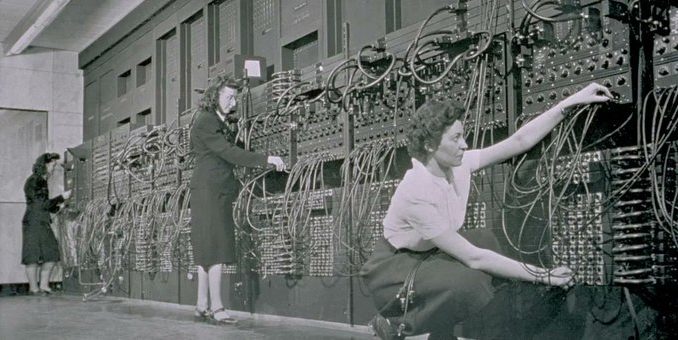
Early in 1946, the U.S. Army was ready to make a big announcement: Scientists had created the “world’s first general-purpose, programmable, all-electronic computer . . . at least a thousand times faster than any other computer on Earth,” the Electronic Numerical Integrator and Computer, or ENIAC.
Its development—how it was built, troubleshot, programmed, checked again—involved years of careful work by mathematicians, physicists and engineers. And its eventual ability to perform faster calculations than anyone had ever dreamt of—“5,000 additions in a second and 500 multiplications in the same second, not to mention lightning-fast divisions and square roots”—owed a surprising debt to a cohort of young women who started the war punching numbers into mechanical calculators to figure out ballistic artillery trajectories.
Their story was all but lost. When Kathy Kleiman was a Harvard undergraduate in the mid-1980s, researching women’s role in the history of computing, she ran across a puzzling photograph—it showed enormous metal machines tethered by cables and adorned with switches and plugs, the famous ENIAC. Two of the men in the photo, its co-inventors, were named, but the women in the room weren’t. She determined to find out more. In “Proving Ground,” her history of the young women who became the ENIAC 6, Ms. Kleiman pulls together a worthwhile record of their work.
